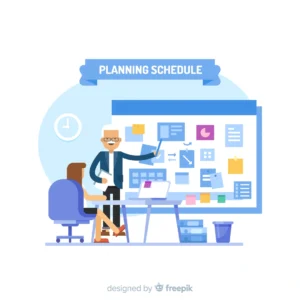Introduction
Construction project management is a multifaceted discipline that demands meticulous planning, strategic execution, and continuous monitoring. Mastering construction project management ensures that projects are completed on time, within budget, and to the desired quality standards. This comprehensive guide outlines a nine-step approach to mastering construction project management, designed to provide actionable insights and practical tips for effective project delivery.
Top 9 Approaches to Master Construction Project Management

1. Fundamentals of Construction Project Management
Excelling in construction project management demands grasping its fundamentals – understanding core principles and practices specific to the industry. Project scope, objectives, and team member roles are key elements. Effective construction project management encompasses planning, coordination, and execution, ensuring every aspect is managed effectively from start to finish
Understanding Project Scope and Objectives
•Project Scope: Defines the boundaries and deliverables of the project. It includes detailed descriptions of the work required to complete the project.
•Objectives: Clear, measurable goals that the project aims to achieve. These objectives guide the project’s direction and provide a benchmark for success.
Roles and Responsibilities
•Project Manager: Oversees the entire project, ensuring that all activities align with the project plan.
•Team: Architects, engineers, and contractors are among the professionals. This team executes specific tasks essential for project success.
•Stakeholders: These include clients, investors, and regulatory bodies who have a vested interest in the project.
2. Project Initiation
The project initiation phase is crucial for laying the groundwork for a successful project. This phase involves defining the project’s goals, objectives, scope, and deliverables. Conducting a feasibility study is essential to assess the project’s viability and identify potential risks. The initiation phase sets the direction for the project and ensures that all stakeholders are aligned with the project’s objectives.
Key Activities in Project Initiation
•Project Charter: A document that formally authorizes the project and outlines its objectives, scope, and stakeholders.
•Feasibility Study: An assessment of the technical, financial, and operational viability of the project.
•Stakeholder Identification: Identifying all parties involved in the project and understanding their interests and expectations.
FAQ: What are the steps in the construction process?
1. Define project goals and objectives.
2. Conduct a feasibility study.
3. Develop a project charter.
4. Identify stakeholders.
5. Establish a project team.
3. Planning Phase
The planning phase is the most critical stage in construction project management. This phase involves developing detailed project plans that outline the project’s scope, schedule, cost, quality, resources, and risk management strategies. Effective planning ensures that all project activities are well-coordinated and that potential issues are identified and addressed proactively.

Components of the Planning Phase
•Project Schedule: A detailed timeline that outlines all project activities and milestones. Tools like Gantt charts can be used to visualize the schedule.
•Budget: A comprehensive financial plan that estimates the costs associated with the project. It includes labor, materials, equipment, and contingency funds.
•Work Breakdown Structure (WBS): A hierarchical decomposition of the project into manageable tasks and activities.
FAQ: How to create an effective construction project plan?
1. Define the project scope.
2. Create a detailed project schedule.
3. Develop a budget.
4. Identify resources and assign tasks.
5. Establish risk management plans.
4. Execution Phase
The execution phase is where the construction work takes place. Coordinating people, resources, and integrating activities from the project plan are crucial for smooth project progress. Effective communication and collaboration among team members are essential.
Key Activities in the Execution Phase
•Resource Allocation: Assigning the necessary resources, including labor, materials, and equipment, to project tasks.
•Task Execution: Performing the tasks outlined in the project plan.
•Communication Management: Ensuring that information flows seamlessly among all project stakeholders.
FAQ: How to develop a construction project timeline?
1. Break down the project into manageable tasks.
2. Estimate the duration of each task.
3. Sequence the tasks logically.
4. Develop a Gantt chart or project timeline.
5. Monitor and adjust the timeline as needed.
5. Monitoring and Controlling
Monitoring and controlling are continuous processes that occur throughout the project lifecycle. This phase involves tracking the project’s progress, identifying any deviations from the plan, and implementing corrective actions to ensure the project stays on track. Key activities include performance measurement, risk management, and quality control.
Key Activities in Monitoring and Controlling
•Performance Measurement: Using key performance indicators (KPIs) to assess project progress and performance.
•Risk Management: Identifying and mitigating risks that could impact the project’s success.
•Quality Control: Ensuring that all project deliverables meet the required quality standards.
FAQ: What steps are included in project resource management?
1. Identify required resources.
2. Assign resources to tasks.
3. Monitor resource utilization.
4. Adjust resource allocation as needed.
5. Ensure effective communication among team members.
6. Project Closure
Project closure is the final phase of construction project management. This phase involves completing all project activities, ensuring that all deliverables meet the required standards, and obtaining formal acceptance from the client. Key activities include finalizing project documentation, conducting post-project evaluations, and releasing project resources.
Key Activities in Project Closure
•Final Deliverables: Ensuring that all project deliverables are completed and meet the required standards.
•Project Documentation: Finalizing all project documents, including contracts, reports, and as-built drawings.
•Post-Project Evaluation: Conducting a review to assess the project’s performance and identify lessons learned.
FAQ: How to manage and mitigate risks in construction projects?
1. Identify potential risks early.
2. Develop risk management plans.
3. Monitor risks throughout the project.
4. Implement risk mitigation strategies.
5. Conduct regular risk assessments.
7. Case Studies
Learning from real-life case studies can provide valuable insights into effective construction project management practices. Analyzing successful projects can help identify best practices and common pitfalls to avoid. Case studies demonstrate practical examples of theoretical concepts applied in real-world scenarios.
Example Case Study: The Big Dig
•Project Overview: The Central Artery/Tunnel Project, known as the Big Dig, was a massive infrastructure project in Boston, Massachusetts.
•Challenges: The project faced significant challenges, including cost overruns, delays, and technical issues.
•Lessons Learned: Effective risk management, stakeholder communication, and adherence to project plans are crucial for large-scale projects.
Case Study 2: Burj Khalifa Construction
•Project Overview: The Burj Khalifa in Dubai is the tallest building in the world. Its construction posed numerous challenges and required innovative engineering solutions.
•Challenges: These included extreme temperatures, logistical issues related to height, and ensuring safety for workers.
•Lessons Learned: The importance of advanced planning, cutting-edge technology, and robust safety protocols were highlighted. Successful management of such a massive project required collaboration across multiple disciplines and constant monitoring of progress and quality.
8. Tools and Resources
Effective construction project management requires the use of various tools and resources. These include project management software, collaboration platforms, and specialized construction management tools. Utilizing the right tools can enhance efficiency, improve communication, and streamline project management processes.
Essential Tools for Construction Project Management
•Microsoft Project: For detailed project planning and scheduling.
•Trello: For task management and collaboration.
•Slack: For team communication.
•Google Workspace: For document management and sharing.
•Asana: For tracking project progress and managing tasks.
Emerging Tools and Technologies

•Building Information Modeling (BIM): A digital representation of the physical and functional characteristics of a facility. BIM allows for better planning, design, and management of construction projects.
•Drones: Used for site surveys, inspections, and monitoring progress. Drones provide real-time data and high-resolution images, improving accuracy and safety.
•3D Printing: An innovative construction technology that allows for the creation of building components using 3D printers. This technology can reduce waste and speed up the construction process.
•Artificial Intelligence (AI): AI can be used for predictive analytics, optimizing project schedules, and enhancing decision-making processes.
FAQ: What steps are involved in conducting a feasibility study?
1. Define the project scope and objectives.
2. Assess the technical feasibility.
3. Evaluate the financial viability.
4. Analyze the legal and regulatory requirements.
5. Identify potential risks and mitigation strategies.
9. Conclusion
Mastering construction project management involves understanding the fundamentals, following a structured approach, and utilizing the right tools and resources. By adhering to these steps, construction managers can ensure their projects are completed successfully, meeting all objectives and delivering value to stakeholders. Effective construction project management not only enhances project outcomes but also fosters a culture of continuous improvement and excellence within the organization
Final Thoughts
•Continuous Learning: Stay updated with the latest trends and best practices in construction project management.
•Adaptability: Be prepared to adapt to changes and unexpected challenges throughout the project lifecycle.
•Communication: Foster open and transparent communication among all project stakeholders.
This step-by-step approach empowers you to master construction project management and achieve outstanding results in your projects.. Remember, the key to success lies in thorough planning, effective execution, and continuous monitoring and control.
Software I Use for This Blog
In writing and managing this blog, I use various tools to ensure efficiency and quality. These include:
Grammarly: For grammar and spell-checking to ensure the content is error-free.
Hemingway Editorhttps: To enhance readability and clarity.
Canva: For creating engaging visuals and infographics
WordPress: For managing and publishing blog content.
Google Analytics: To track blog performance and reader engagement.
By leveraging these tools, I ensure that the content I create is informative, engaging, and valuable to my readers. Mastering construction project management requires dedication, continuous learning, and the application of best practices and tools.
Additional Considerations in Construction Project Management
Sustainability in Construction
Sustainability has become a critical consideration in modern construction projects. Sustainable construction practices aim to minimize the environmental impact of building activities and promote resource efficiency. Key practices include using eco-friendly materials, reducing waste, and implementing energy-efficient designs.
Key Sustainable Practices
•Green Building Materials: Using materials that are recycled, renewable, and have a low environmental impact.
•Energy Efficiency: Designing buildings that consume less energy through efficient HVAC systems, insulation, and lighting.
•Waste Reduction: Implementing waste management plans that focus on recycling and reusing materials.
Adhering to regulatory standards and obtaining necessary permits is crucial in construction project management. Compliance ensures that projects meet legal requirements and avoid potential fines and delays.
Key Regulatory Considerations
•Building Codes: Regulations that specify the standards for construction, design, and occupancy of buildings.
•Zoning Laws: Local regulations that dictate how land can be used and what types of structures can be built.
•Safety Standards: Regulations that ensure the safety of construction workers and site visitors.
Innovative Construction Techniques
Adopting innovative construction techniques can enhance project efficiency and quality. Modular construction, prefabrication, and lean construction techniques streamline processes and reduce costs.
